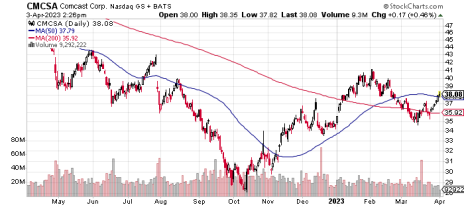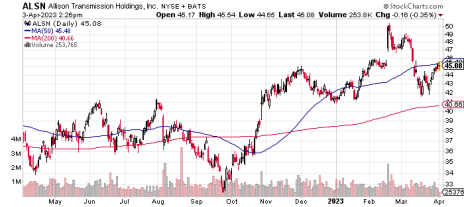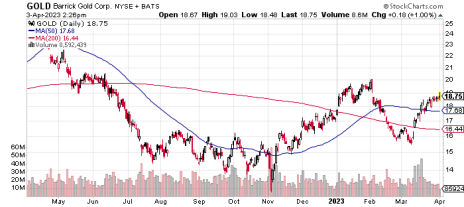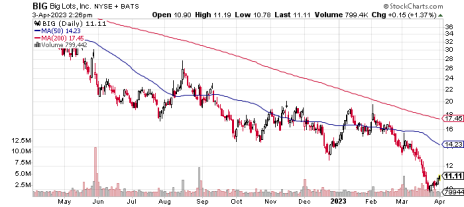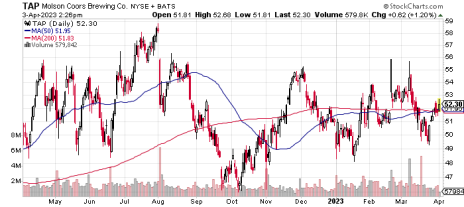Gold Re-Awakens. Our Thoughts on Why.
Gold traded briefly above $2,000/ounce last week and now seems to be trading a bit more convincingly above that rounded number this week. Compared to the $1,644 price last October, the price of gold has surged 22% (about 5 points more than the S&P 500’s rebound). What’s behind the lift?
The yellow metal is generally thought to derive its value from its role as a safe haven in times of global fear and disruption. We’re not entirely convinced of this, at least over the short term. Two recent examples: during the 2008-09 Global Financial Crisis, gold prices actually fell. The 25% decline from around $970 in early 2008 to $730 by October 2008 should have spurred a need for a safe haven but didn’t. The decline was likely driven by plummeting bond yields. And well past the worst of the crisis, in mid-2011, gold surged to over $1,800/ounce on renewed inflation fears combined with heavy quantitative easing.
Our view is that gold is primarily a store of value – a protector of buying power. When inflation is high (and perceived to be enduring), but interest rates aren’t keeping up, gold tends to surge. This was the case in the late 1970s. The subsequent defeat of elevated inflation, combined with sliding interest rates, led to a sharp decline in gold prices.
Following its $260/ounce floor in 2001, gold rose steadily over the following six years. Much of the latter era’s strength was likely due to the 35% decline in the value of the U.S. dollar, reflecting the use of dollars in executing gold transactions. The weak currency implies that gold would protect one’s buying power better than dollars, and hence is bid up. At the same time, yields on ten-year Treasuries fell from 6.50% to the 4.00% to 4.50% range, also helping prop up gold.
And, the surge in gold from this past October: the price troughed when investor fears about the Fed’s rate hike campaign were at their highest. Once fears ebbed, even as inflation remained elevated, gold started to recover.
Today, inflation seems likely to remain stubbornly above the Fed’s 2% target. Even if inflation settles at a 4% rate, the effect on buying power is immense. Over a decade, at 2%, the value of $100 today erodes to $82, whereas at 4% it erodes to $68. At 6% inflation, $100 devalues to only $56 in spending power over a decade. Ten years may seem like a long time, but ten years ago was only 2013. And, the average person, either in retirement or approaching retirement, has little or no salary increases ahead so they need to protect their spending power – gold is becoming a more desirable way to do this.
Higher interest rates are a direct drag on gold prices for two reasons. First, gold is an inert asset – it neither grows nor compounds. It is simply a heavy metal bar which must be stored securely somewhere. The cost to store gold, which is incurred every year, is a drag on gold returns.
Second, investors earn nothing on their gold holdings. So, they have to bear the opportunity cost of not owning interest-bearing assets. The higher the interest cost, the higher the opportunity cost for holding gold, which weighs on the demand for gold. If interest rates are perceived as at least offsetting inflation, then gold prices may not have much lift. But, if the inflation rate exceeds the yield on otherwise risk-free securities like the 10-year Treasury, gold becomes more valuable.
This week, the Fed’s inflation fight was incrementally set back by the OPEC+ plan to cut production, which lifted oil to over $80. With lingering worries about the effect of rising interest rates on bank capital levels, the Fed seems less likely to press interest rates still higher.
Our outlook on gold? While impossible to predict where gold prices are headed, we see the gold-favorable direction of the three key drivers (inflation, interest rates and the dollar) as being reasonably sustainable.
Share prices in the table reflect Monday, April 3 closing prices. Please note that prices in the discussion below are based on mid-day April 3 prices.
Note to new subscribers: You can find additional color on past earnings reports and other news on recommended companies in prior editions and weekly updates of the Cabot Undervalued Stocks Advisor on the Cabot website.
Send questions and comments to Bruce@CabotWealth.com.
Today’s Portfolio Changes
None.
Portfolio Changes Since Last Month
Comcast Corp. (CMCSA) – Moving shares from Hold to Buy.
Organon (OGN) – Moving from Buy to Sell.
UPCOMING EARNINGS REPORTS
Friday, April 14: Citigroup (C)
Monday, April 24: Sensata Technologies (ST)
Wednesday, April 26: Allison Transmission (ALSN)
Thursday, April 27: Comcast (CMCSA), Molson Coors Beverage Company (TAP)
SCHEDULE NOTE: Mid-April brings school vacation season. As I will be taking the family traveling, the Tuesday, April 18 update will be brief and minimal, although it will cover Citigroup’s earnings and any other major news. I’ll also send any Alerts if necessary.
Growth & Income Portfolio
Growth & Income Portfolio stocks are generally higher-quality, larger-cap companies that have fallen out of favor. They usually have some combination of attractive earnings growth and an above-average dividend yield. Risk levels tend to be relatively moderate, with reasonable debt levels and modest share valuations.
| Stock (Symbol) | Date Added | Price Added | 4/3/23 | Capital Gain/Loss | Current Dividend Yield | Price Target | Rating |
| Cisco Systems (CSCO) | 11/18/20 | 41.32 | 52.32 | 26.60% | 3.00% | 66 | Buy |
| Comcast Corp (CMCSA) | 10/26/22 | 31.5 | 38.08 | 20.90% | 3.00% | 42 | Buy |
| Current price | 2023 EPS Estimate | 2024 EPS Estimate | Change in 2023 Estimate | Change in 2024 Estimate | P/E 2023 | P/E 2024 | |
| CSCO | 52.19 | 3.76 | 4.03 | 0.0% | 0.0% | 13.9 | 13.0 |
| CMCSA | 38.21 | 3.65 | 4.10 | -0.1% | -0.1% | 10.5 | 9.3 |
Cisco Systems (CSCO) is facing revenue pressure as customers migrate to the cloud and thus need less of Cisco’s equipment and one-stop-shop services. Cisco’s prospects are starting to improve under a relatively new CEO, who is shifting Cisco toward a software and subscription model and is rolling out new products, helped by its strong reputation and entrenched position within its customers’ infrastructure. The company is highly profitable, generates vast cash flow (which it returns to shareholders through dividends and buybacks) and has a very strong balance sheet.
There was no significant company-specific news in the past week.
CSCO shares rose 3% in the week and have 26% upside to our 66 price target. The valuation is attractive at 9.8x EV/EBITDA and 13.9x earnings per share. The 3.0% dividend yield adds to the appeal of this stock. BUY
Comcast Corporation (CMCSA) – With $120 billion in revenues, Comcast is one of the world’s largest media and entertainment companies. Its properties include Comcast cable television, NBCUniversal (movie studios, theme parks, NBC, Telemundo and Peacock), and Sky media. The Roberts family holds a near-controlling stake in Comcast. Comcast shares have tumbled due to worries about cyclical and secular declines in advertising revenues and a secular decline in cable subscriptions as consumers shift toward streaming services, as well as rising programming costs and incremental competitive pressure as phone companies upgrade their fiber networks.
However, Comcast is a well-run, solidly profitable and stable company that will likely continue to successfully fend off intense competition while increasing its revenues and profits, as it has for decades. The company generates immense free cash flow which is more than enough to support its reasonable debt level, generous dividend and sizeable share buybacks.
There was no significant company-specific news in the past week.
Comcast shares rose 5% in the past week and have 10% upside to our 42 price target. The shares offer an attractive 3.0% dividend yield. Last month, given the decline in the shares, we restored our Buy rating. BUY
Buy Low Opportunities Portfolio
Buy Low Opportunities Portfolio stocks include a wide range of value opportunities. These stocks carry higher risk than our Growth & Income stocks yet also offer more potential upside. This group may include stocks across the quality and market cap spectrum, including those with relatively high levels of debt and a less-clear earnings outlook. The stocks may not pay a dividend. In all cases, the shares will trade at meaningful discounts to our estimate of fair value.
| Stock (Symbol) | Date Added | Price Added | 4/3/23 | Capital Gain/Loss | Current Dividend Yield | Price Target | Rating |
| Allison Transmission Hldgs (ALSN) | 2/22/22 | 39.99 | 45.13 | 12.90% | 2.00% | 54 | Buy |
| Aviva (AVVIY) | 3/3/21 | 10.75 | 10.05 | -6.50% | 7.30% | 14 | Buy |
| Barrick Gold (GOLD) | 3/17/21 | 21.13 | 18.76 | -11.20% | 2.10% | 27 | Buy |
| BigLots (BIG) | 4/12/22 | 35.24 | 11.09 | -68.50% | 10.80% | 25 | HOLD |
| Citigroup (C) | 11/23/21 | 68.1 | 46.82 | -31.20% | 4.40% | 85 | Buy |
| Gates Industrial Corp (GTES) | 8/31/22 | 10.71 | 13.78 | 28.70% | 0.00% | 16 | Buy |
| Molson Coors (TAP) | 8/5/20 | 36.53 | 52.25 | 43.00% | 3.10% | 69 | Buy |
| Sensata Technologies (ST) | 2/17/21 | 58.57 | 49.32 | -15.80% | 0.90% | 75 | Buy |
| Current price | 2023 EPS Estimate | 2024 EPS Estimate | Change in 2023 Estimate | Change in 2024 Estimate | P/E 2023 | P/E 2024 | |
| ALSN | 44.86 | 6.07 | 6.70 | 0.0% | 0.0% | 7.4 | 6.7 |
| AVVIY | 10.06 | 0.54 | 0.62 | 0.2% | 0.2% | 18.5 | 16.2 |
| GOLD | 18.90 | 0.81 | 1.02 | 2.6% | 1.7% | 23.2 | 18.5 |
| BIG | 10.89 | (4.08) | (2.31) | 1.5% | -5.3% | (2.7) | (4.7) |
| C | 46.57 | 5.79 | 6.77 | 0.0% | 0.0% | 8.0 | 6.9 |
| GTES | 13.72 | 1.18 | 1.36 | -0.1% | 0.0% | 11.6 | 10.1 |
| TAP | 52.14 | 4.07 | 4.31 | 0.0% | 0.0% | 12.8 | 12.1 |
| ST | 49.13 | 3.76 | 4.30 | -0.1% | 0.0% | 13.1 | 11.4 |
Allison Transmission Holdings, Inc. (ALSN) – Allison Transmission is a midcap manufacturer of vehicle transmissions. While many investors view this company as a low-margin producer of car and light truck transmissions that is destined for obscurity in an electric vehicle world, Allison actually produces no car or light truck transmissions. Rather, it focuses on the school bus and Class 6-8 heavy-duty truck categories, where it holds an 80% market share. Its EBITDA margin is sharply higher than its competitors and on par with many specialty manufacturers. And, it is a leading producer and innovator in electric axles which all electric trucks will require. The company generates considerable free cash flow and has a low-debt balance sheet. Its capable leadership team keeps its shareholders in mind, as the company has reduced its share count by 38% in the past five years.
There was no significant company-specific news in the past week.
ALSN shares rose 3% in the past week, have 20% upside to our 54 price target and offer a 2.1% dividend yield. BUY
Aviva, plc (AVVIY), based in London, is a major European company specializing in life insurance, savings and investment management products. Amanda Blanc, hired as CEO in July 2020, is revitalizing Aviva’s core U.K., Ireland and Canada operations following her divestiture of other global businesses. The company now has excess capital which it is returning to shareholders as likely hefty dividends following a sizeable share repurchase program. We expect that activist investor Cevian Capital, which holds a 5.2% stake, will keep pressuring the company to maintain shareholder-friendly actions.
On March 9, Aviva reported strong second-half 2022 results. The company’s capital, as measured by its wonky Solvency II Shareholder Cover Ratio, is sturdy at 212% despite sizeable share buybacks and dividends. Aviva continues to make impressive progress as it winds down its overhaul and shifts into steadier growth. Reflecting its strong capital position, for 2023 the management incrementally raised its dividend expectations to at least £0.326/share, or about $0.78/ADR, and announced a new £300 million buyback, or about 2.4% of Aviva’s market cap. These returns of capital are expected to be covered by cash flows, leaving the firm well-capitalized in the currently turbulent market.
There was no significant company-specific news in the past week.
Aviva shares fell 1% this past week and have 39% upside to our 14 price target. Based on management’s guidance for the 2023 dividend, the shares offer a generous 8.0% yield. On a combined basis, the dividend and buyback provide more than a 10% return to shareholders. BUY
Barrick Gold (GOLD), based in Toronto, is one of the world’s largest and highest-quality gold mining companies. About 50% of its production comes from North America, with the balance from Africa/Middle East (32%) and Latin America/Asia Pacific (18%). Barrick will continue to improve its operating performance (led by its highly capable CEO), generate strong free cash flow at current gold prices, and return much of that free cash flow to investors while making minor but sensible acquisitions. Also, Barrick shares offer optionality – if the unusual economic and fiscal conditions drive up the price of gold, Barrick’s shares will rise with it. Given their attractive valuation, the shares don’t need this second (optionality) point to work – it offers extra upside. Barrick’s balance sheet has nearly zero debt net of cash. Major risks include the possibility of a decline in gold prices, production problems at its mines, a major acquisition and/or an expropriation of one or more of its mines.
There was no significant company-specific news in the past week.
Over the past week, commodity gold ticked up 3% to $2,006/ounce as investors continued to worry about another global financial crisis and the dampening effect this will likely have on the Fed’s rate hike campaign. The recent OPEC+ announcement that it is cutting its oil production incrementally boosts the odds of elevated inflation which helps gold prices.
This past week, the 10-year Treasury yield ticked lower to 3.41%. The U.S. Dollar Index (the dollar and gold usually move in opposite directions) ticked down to 102.21, likely due to incrementally lower odds of a “higher for longer” Fed interest rate policy.
Investors and commentators offer a wide range of outlooks for the economy, interest rates and inflation. We have our views but hold these as more of a general framework than a high-conviction posture. Investing in gold-related equities is a long-term decision – investors shouldn’t allow near-term weakness to deter their resolve.
Barrick shares rose 2% in the past week and have 43% upside to our 27 price target. BUY
Big Lots (BIG) – Big Lots is a discount general merchandise retailer based in Columbus, Ohio, with 1,431 stores across 47 states. Its stores offer an assortment of furniture, hard and soft home goods, apparel, electronics, food and consumables as well as seasonal merchandise. Our initial case for Big Lots rested with its loyal and growing base of 22 million rewards members, its appeal to bargain-seeking customers, the relatively stable (albeit low) cash operating profit margin, its positive free cash flow, debt-free balance sheet and low share valuation. Our thesis was deeply rattled by the company’s surprisingly large inventory glut, now resolved, but which leaves the company with a hefty and permanent $300 million debt burden.
Big Lots shares remain high-risk due to the new debt balance, weak fundamentals and the possibility of a suspension or reduction of the dividend. Sentiment in the shares is very weak – investors unwilling or unable to sustain further losses in the shares should sell now, as sentiment could weaken further and drive the shares lower.
Regarding the dividend, Big Lots now has every incentive to eliminate it. Investors clearly are not convinced that it will be maintained, given the company’s likely weak profits for at least the current fiscal year. And, eliminating the $35 million in cash payouts would help the company retire its $300 million debt as well as ease future seasonal borrowings.
There was no significant company-specific news in the past week.
Big Lots shares rose 5% this past week and have 130% upside to our revised 25 price target. The shares offer an 11% dividend yield, although, as noted, investors should not rely on this dividend being sustained. We continue to hold onto Big Lots’ shares as we believe the company will ultimately rebuild about half of its prior earnings base. The shares’ highly discounted valuation provides a reasonable valuation cushion, even as investor sentiment continues to push the shares lower. HOLD
Citigroup (C) – Citi is one of the world’s largest banks, with over $2.4 trillion in assets. The bank’s weak compliance and risk-management culture led to Citi’s disastrous and humiliating experience in the 2009 global financial crisis, which required an enormous government bailout. The successor CEO, Michael Corbat, navigated the bank through the post-crisis period to a position of reasonable stability. Unfinished, though, is the project to restore Citi to a highly profitable banking company, which is the task of new CEO Jane Fraser.
This past week, the yield spread between the 90-day T-bill and the 10-year Treasury bond, which approximates the drivers behind Citi’s net interest margin, widened to negative 136 basis points (100 basis points in one percentage point), as long-term rates fell.
Until inflation relents to a 2% pace for perhaps six months, we see little chance for the Fed to declare “mission accomplished.” The recent CPI and other reports suggest that the six-month clock hasn’t yet started.
Citi hired Andy Seig, the head of Bank of America’s Merrill Wealth Management, to lead its wealth management business. We see this as the impressive addition of an industry veteran who can help bolster Citi’s credentials and execution.
Concerns over the stability of the U.S. and global financial industry have eased, but there remains considerable uncertainty about whether other hidden bank, hedge fund or other failures may emerge. The upcoming earnings season will likely be highly enlightening about potential winners and losers.
In the most recent edition of the Cabot Turnaround Letter, we reiterated our favorable view of Citigroup shares and included these comments:
“The bank’s CET1 capital ratio of 13.0% is healthy and a full percentage point above the new minimum of 12.0%. While its capital ratio could perhaps slip to 11% if it were to be required to take a 10% mark-to-market hit to its held-to-maturity bond holdings, we see such a requirement as unlikely. We see little to no chance of a capital raise or dividend cut, although share buybacks won’t likely resume for another year or two. Citi’s profitability appears relatively resilient. The shares currently trade at a very low 53% of tangible book value and 7.5x estimated 2023 earnings per share, and offer a likely sustainable 4.7% dividend yield. Citi is highly unlikely to experience a bank run, as depositors should know that they will almost certainly be fully protected given Citi’s status as a systemically important financial institution.”
Citi shares rose 4% in the past week and have 83% upside to our 85 price target. Citigroup investors enjoy a 4.4% dividend yield.
When comparing Citi shares with a U.S. 10-year Treasury bond, Citi offers a higher yield and considerably more upside potential (about 83% according to our work vs. 0% for the Treasury bond). Clearly, the Citi share price and dividend payout carry considerably more risk than the Treasury bond, but at the current valuation, Citi shares would seem to have a remarkably better risk/return trade-off. BUY
Gates Industrial Corp, plc (GTES) – Gates is a specialized producer of industrial drive belts and tubing. While this niche might sound unimpressive, Gates has become a leading global manufacturer by producing premium and innovative products. Its customers depend on heavy-duty vehicles, robots, production and warehouse machines and other equipment to operate without fail, so the belts and hydraulic tubing that power these must be exceptionally reliable. Few buyers would balk at a reasonable price premium on a small-priced part from Gates if it means their million-dollar equipment keeps running. Even in automobiles, which comprise roughly 43% of its revenues, Gates’ belts are nearly industry-standard for their reliability and value. Helping provide revenue stability, over 60% of its sales are for replacements. Gates is well-positioned to prosper in an electric vehicle world, as its average content per EV, which require water pumps and other thermal management components for the battery and inverters, is likely to be considerably higher than its average content per gas-powered vehicle.
The company produces wide EBITDA margins, has a reasonable debt balance and generates considerable free cash flow. The management is high-quality. In 2014, private equity firm Blackstone acquired Gates and significantly improved its product line-up and quality, operating efficiency, culture and financial performance. Gates completed its IPO in 2018, with Blackstone retaining a 63% stake today.
There was no significant company-specific news in the past week.
GTES shares rose 2% in the past week and have 17% upside to our 16 price target. BUY
Molson Coors Beverage Company (TAP) is one of the world’s largest beverage companies, producing the highly recognized Coors, Molson, Miller and Blue Moon brands as well as numerous local, craft and specialty beers. About two-thirds of its revenues come from the United States, where it holds a 24% market share. Investors worry about Molson Coors’ lack of revenue growth due to its relatively limited offerings of fast-growing hard seltzers and other trendier beverages. Our thesis for this company is straightforward – a reasonably stable company whose shares sell at an overly discounted price. Its revenues are resilient, it produces generous cash flow and is reducing its debt. A new CEO is helping improve its operating efficiency and expand carefully into more growthier products. The company recently reinstated its dividend.
There was no significant company-specific news in the past week.
TAP shares rose 2% in the past week and have 32% upside to our 69 price target. The stock remains cheap, particularly on an EV/EBITDA basis, or enterprise value/cash operating profits, where it trades at 8.6x estimated 2023 results, still among the lowest valuations in the consumer staples group and below other brewing companies. BUY
Sensata Technologies (ST) is a $3.8 billion (revenues) producer of nearly 47,000 highly engineered sensors used by automotive (60% of revenues), heavy vehicle, industrial and aerospace customers. About two-thirds of its revenues are generated outside of the United States, with China producing about 21%. Investors undervalue Sensata’s durable franchise. Its sensors are typically critical components that generally produce high profit margins. As the sensors’ reliability is vital to safety and performance, customers are reluctant to switch to another supplier that may have lower prices but also lower or unproven quality. Sensata has an arguably under-leveraged balance sheet and generates healthy free cash flow. The relatively new CEO will likely continue to expand the company’s growth potential through acquisitions. Electric vehicles are an opportunity as they expand Sensata’s reachable market.
There was no significant company-specific news in the past week.
ST shares rose 4% in the past week and have 53% upside to our 75 price target. Our price target looks optimistic in light of the broad market sell-off, but we will keep it for now, even as it may take longer for the shares to reach it. BUY
Strong Buy – This stock offers an unusually favorable risk/reward trade-off, often one that has been rated as a Buy yet the market has sold aggressively for temporary reasons. We recommend adding to existing positions.
Buy – This stock is worth buying.
Hold – The shares are worth keeping but the risk/return trade-off is not favorable enough for more buying nor unfavorable enough to warrant selling.
Sell – This stock is approaching or has reached our price target, its value has become permanently impaired or changes in its risk or other traits warrant a sale.
Note for stock table: For stocks rated Sell, the current price is the sell date price.
The next Cabot Undervalued Stocks Advisor issue will be published on May 2, 2023.


